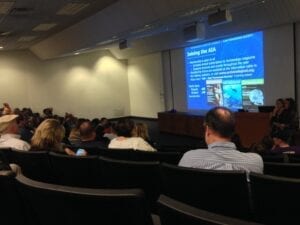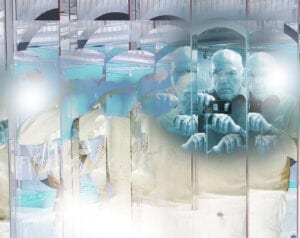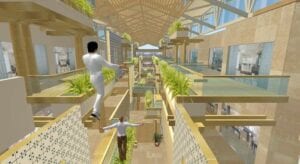UT archaeology professors speak on study in Jordan
Erin and Robert Darby, Ph.Ds, gave a lecture describing their recent archaeological discoveries at the Ayn Gharandal Excavation site in Jordan. The event took place on Oct. 8 in the McClung Museum Lecture Hall.
The American Institutes of Architects (AIA) is a nationwide archaeological organization and considered North America’s oldest and largest. Its members include various people interested in Archaeology, such as students, professors and professional archaeologists and has 108 societies throughout the U.S., Canada and Europe. The AIA promotes research by providing fieldwork scholarships to undergraduates and grants for archeological publications. It also publishes in the American Journal of Archaeology and produces Archaeology magazine.

This lecture’s topic was on the work and progress being done within the Ayn Gharandal Archaeological Project, which was founded by co-directors Erin and Robert Darby.
The excavation site lies within the Wadi Araba, a border crossing between Israel and Jordan. While there was not much support for significant archaeological remains in the desolate, sandy area when referencing accounts from historic figures (Lawrence of Arabia), recently archaeologists have found numerous sites dotting the ancient trade route that hold much significance and promote much promise for the area.
The site being excavated at Ayn Gharandal is determined to be a Roman fort, amazingly well preserved due to its imprisonment in the hot, barren sands. According to a post by the archaeologists, some things they have so far uncovered are a bathhouse complete with “tubuli still in the walls, an intact underground heating system, and a latrine.”
But even more significant for the archaeologists and student field workers alike was the discovery of a red inscription on one of the walls, along with “pictorial and epigraphic graffiti in the bathhouse,” which gives them a great deal of information about the history of the site.
More recent discoveries range from ceramics to numerous human remains. The archaeologists said that they even had to stop digging the specific area that held the remains, for they presumed that there was much more; they were afraid they would not be able to give the right amount of tedious dedication to the process of unearthing the dead human bones within the amount of time they had on this year’s dig. The directors still took the time during the lecture to emphasize how well the students were able to adapt and master the process of digging up the remains, noting how much work they were able to complete on the site in 2013 compared to the previous summers.
However the crowing jewel of 2013 for the Ayn Gharandal Archaeological Project was the discovery of the fallen entrance gate to the Roman fort. Why it was so significant was because on most of the Fort entrance gates of this period, it was common to hold an inscription, containing such information as the name of the militia stationed at the fort along with other valuable details.
The team, with much physical effort and help from the locals, was able to turn over the heavy headstone, which lay fallen forward with the gate, and indeed found a wonderfully preserved inscription on its front side. The photo of the stone block was first seen by people outside of the team at this McClung Museum Lecture, and has yet to be published or shown at any other sort of venue. The slab of rock held that information which the archaeologists presumed, and successfully proved the Ayn Gharandal Excavation’s worthiness.
For more information about the Ayn Gharandal Archaeological Project you can visit http://asorblog.org/?p=2992, or form more information about AIA you can visit http://web.utk.edu/~anthrop/aia.html.
Edited by Zach Dennis



